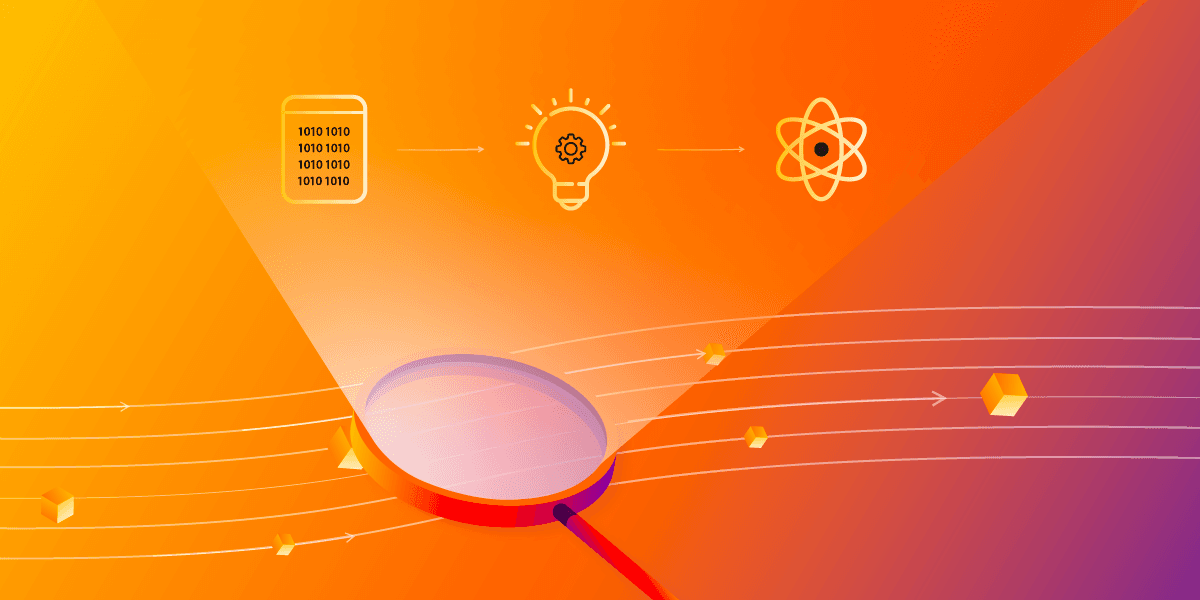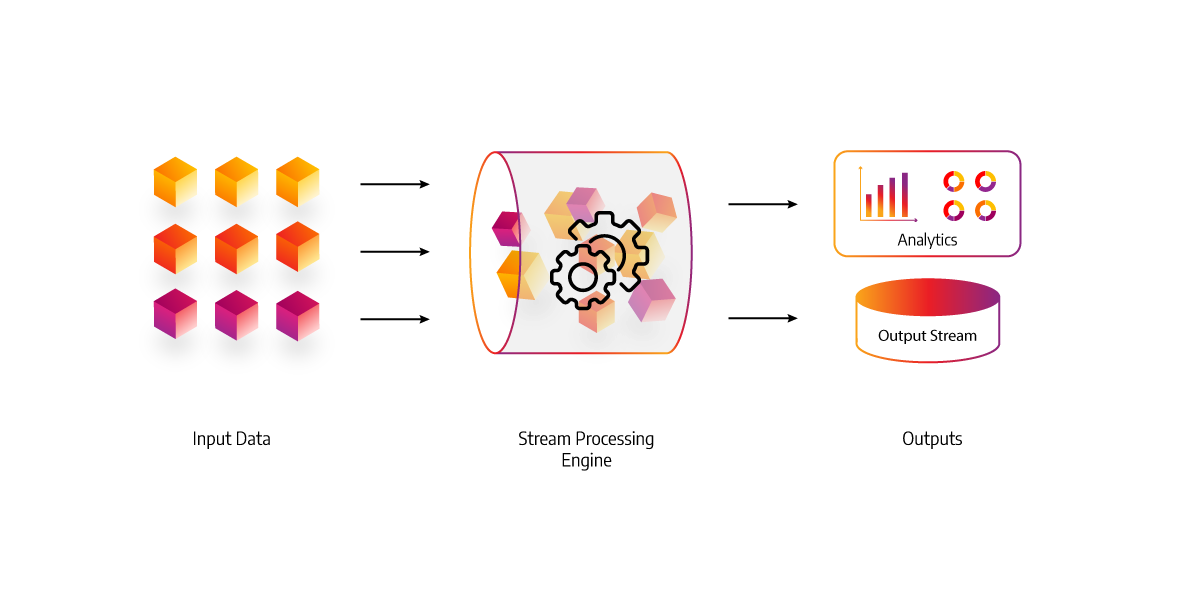
Introduction to Streaming Databases
In today's data-driven world, businesses and organizations are constantly collecting and analyzing data to gain insights and make better decisions. However, the traditional approach to storing and processing data in batch mode is no longer sufficient to keep up with the demands of real-time data processing. The solution — streaming databases!
Designed to handle high-velocity, high-volume data streams in real-time, streaming databases can ingest and process data as it arrives, without the need for batch processing. This makes them ideal for applications such as Internet of Things (IoT) sensors, social media analytics, financial trading systems, and more.
What is a streaming database?
A streaming database can be defined as a real-time data repository for storing, accumulating, processing, and enhancing a data stream. A data stream, in turn, is the stream/flow of data which is generated continuously from multiple sources. Data streams are incrementally processed through stream processing techniques without initially needing to access the complete data.
However, the term “streaming database” is not just limited to an individual discrete class database management system. In fact, it extends to numerous stream data handling databases in real time. The databases handling this streaming data can lie in any database category, i.e., NoSQL databases, NewSQL databases, time-series databases, in-memory databases, or in-memory data grids.
How do streaming databases work?
When a data stream reaches a real-time streaming database, it is immediately processed. That data can directly be used in your application after analysis.
The data inputs to a streaming database are called data streams. These data streams are events of append-only sequences and are immutable. The input data to a database is categorized into two tiers.
The first tier is streaming, while the second tier is user-built based on the behavior of these streams, which may be referred to as statistics of events. This input stream analysis is stored in columns and tables in the same way it is stored in a traditional relational database. The following image presents the flowchart for the working of a streaming database:

The data reserved in a streaming database can be web-generated log files, user information from social media platforms, e-commerce user trends, in-game user activity reports, or telemetry from various gadgets in data centers. This data is processed sequentially and incrementally and then used in making analyses like regression, filtering, sampling, and correlation.
The opportunity for real-time data analysis creates room for various use cases for different industries. Companies can make use of this analysis and make relevant decisions based on the analysis results. Consider an example for an organization, where social media analysis is done through the resources from a streaming database. The organization can easily analyze user behavior and activity. This observation can help the company to take new steps based on the analyzed data to improve efficiency.
Streaming databases vs. traditional relational databases
One of the major differences between streaming and a traditional relational database is the real-time aspect. Traditional databases are simply data repositories, but these can work alongside streaming databases as a use case for large organizations. In such databases, when you input the data in columns and tables, the data will simply be integrated into the system and nothing visual will happen. When a query is issued, it is simply scanned by the traditional database, and results are declared. You are blind to any process happening between the invocation of two queries into the database.
On the other hand, streaming databases are a contrast to traditional databases. When a query is invoked, the data is immediately processed, and this process updates the results of all registered queries. You can read all the query results by viewing changes in data. This can be referred to as a continuous learning experience.
Companies use simple applications for data collection and for processing statistical operations such as minimum-maximum computation. With a streaming database, these applications can evolve and use real-time complex processing algorithms for computations and query results. These real-time processing algorithms are capable of conducting sophisticated analysis through several machine learning models.
A relational database also has some advantages that allow it to work alongside a streaming database. Relational databases help to maintain data accuracy and integrity. It is also capable of reducing the data redundancy to near zero. As relational databases do not carry real-time implementation features, it is relatively easier to implement processes along with the flexibility of data. But in this case, you cannot analyze the evolutions data has undergone before declaring the query result.
In short, relational databases are definitely useful, and many diverse organizations prefer using them alongside streaming databases for enhanced results.
Benefits of a streaming database
Streaming databases offer several key benefits over traditional databases, including:
Real-time data processing
Streaming databases can process data as it arrives, allowing for real-time data processing and analysis. This enables businesses to make faster decisions and respond to events as they happen.
Scalability
In addition, streaming databases are designed to handle large volumes of data, making them highly scalable — all that, without sacrificing performance.
Efficiency
Typically, streaming databases are pretty efficient, as they do not require data to be batched or loaded into the database, which reduces the time and resources needed for data processing.
Use cases for streaming databases
A lot of companies are adapting to streaming databases. Here are some of the common use cases of streaming databases:
- Internet of Things (IoT) sensors: Streaming databases can ingest and process data from IoT sensors, allowing businesses to monitor and analyze sensor data in real-time.
- Social media analytics: Social media platforms generate massive amounts of data in real time, making them another ideal use case for streaming databases. The latter can process and analyze social media data, enabling businesses to navigate through social media trends and sentiment.
- Financial trading systems: Due to streaming databases traders can gain insights into financial data as it is generated, enabling faster and more effective decision-making.
- Fraud detection: Detecting and preventing fraudulent activity as soon as possible is another major use case of streaming databases.
- Real-time analytics: Streaming databases can be used for real-time analytics in a number of industries, including retail, healthcare, and transportation.
- Online gaming: Online gaming applications can improve their gaming experience by processing player data as it comes in.
Top 4 streaming databases
Having an understanding of common use cases is not yet a guarantee that you can make use of streaming databases right off. To further enrich your knowledge about streaming database fundamentals, make sure to check out some of the top streaming databases below:
Memgraph
Memgraph is a graph application platform that provides its users with a fully-featured streaming database. The streaming database provided by Memgraph has the following advantages:
- Carries high-availability replication
- Is better optimized for performance
- Allows ACID transactions
- Is equipped with a hybrid storage engine
- Provides on-disk persistency
- Real-time data analysis
- Provides full Cypher support
- Is optimized for low latency
As for the pricing scheme, its streaming repository for the community edition is completely free.
Materialize
Materialize is an SQL streaming database that is built over an open-source timely dataflow project. Its streaming database provides below listed features:
- Direct connection to event streaming infrastructures
- Interaction through Postgre SQL interface
- Integrated plug-and-play tool
- Q&A opportunity related to living data streaming
Materialize facilitates you with a free trial period of 30 days. You can also purchase hourly plans depending on the size of your organization.
Rockset
Rockset is a real-time analysis application that allows its users to build real-time analysis through fast queries. Its database carries the following features:
- Provides a low-latent search
- Less operational burden
- Connects with massive data streams
- Allows aggregations
Rockset provides a free model to its users who are considered best for prototyping. It provides a $0.7989 per hour plan for better production rates. You can purchase your custom stream as well.
Kafka
Apache Kafka provides a streaming database from multiple source systems, offering the following:
- Real-time analysis of big data streams
- Fault-tolerant features
- Durable, scalable, and fast system
- Tracking of IoT data
You can download the Kafka software by heading over to their site.
Final thoughts
Streaming databases are indeed a powerful tool for handling real-time data streams. They offer several key benefits over traditional databases, including real-time data processing, scalability, and efficiency. With their ability to handle large volumes of data and process it in real time, streaming databases are well-suited for a wide range of applications, including IoT sensors, social media analytics, and financial trading systems. If your business requires real-time data processing and analysis, consider using a streaming database to help you stay ahead of the competition.